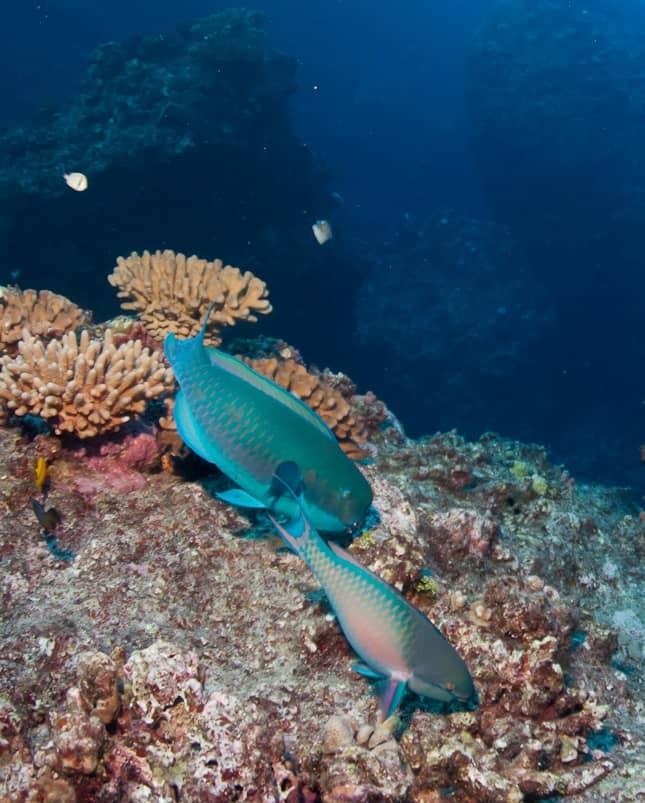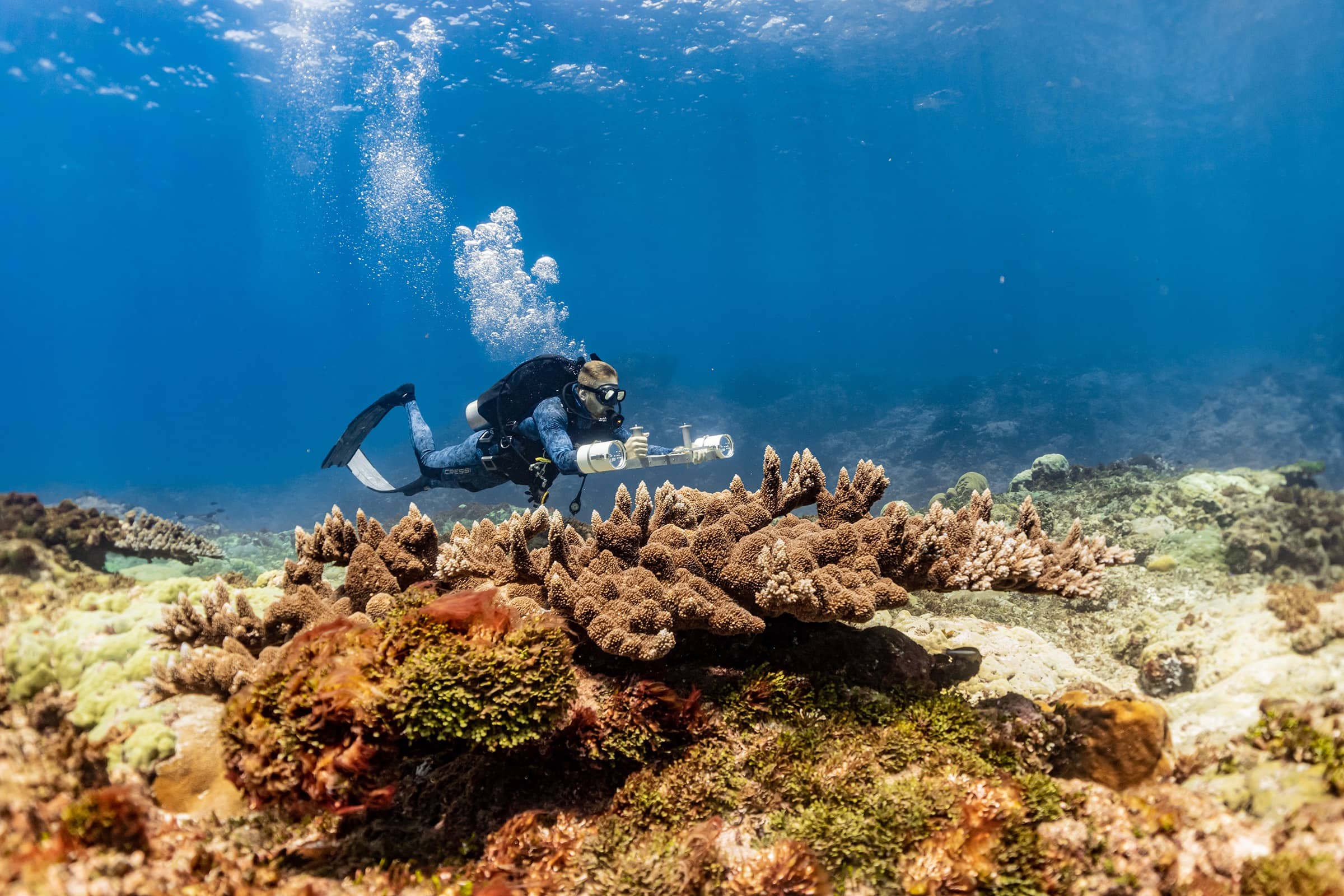- Home
-
Admissions
-
Academics
-
Students
-
Research
-
Research Centers
- Cancer Research Center
- Center for Excellence in Development Disabilities Education, Research & Service (CEDDERS)
- Center for Island Sustainability (CIS)
- Marine Laboratory
- Micronesian Area Research Center (MARC)
- UOG Land Grant | agInnovation Research Center
- Water and Environmental Research Institute (WERI)
-
Programs and Departments
- Guam EPSCOR
- Guma' Tinemtom - Micronesia Data Laboratory
- Pacific Islands Climate Adaptation Science Center (PI-CASC)
- Pacific Islands Cohort on Cardiometabolic Health (PICCAH)
- Research Corporation of UOG
- RFK Memorial Library
- UOG Press
- UOG Sea Grant
- University Libraries Digital Team
- NASA Guam Space Grant
- NASA Guam EPSCoR
-
Research Centers
-
Outreach
- Giving
- Alumni
-
About
UOG study: Parrotfish stocks decrease 30% over a decade
UOG study: Parrotfish stocks decrease 30% over a decade
UOG study: Parrotfish stocks decrease 30% over a decade
2/1/2023


Parrotfish numbers in Guam have decreased by 30 percent over the past decade, according to a University of Guam Sea Grant-funded study conducted by researchers from the UOG Marine Laboratory.
During the study, “Decadal changes in parrotfish assemblages around reefs of Guam, Micronesia,” researchers used video cameras to survey parrotfish numbers in 2012 and then again in identical locations in 2021.
The cameras allowed researchers to record the survey of approximately 15,000 parrotfishes. The survey included measuring the length of the parrotfishes.
According to the study, 63 percent of the surveyed sites with increased numbers of parrotfish stocks were within Marine Protected Areas.
Meanwhile, 70 percent of the surveyed sites that showed a decline were in unprotected areas.
The study found that overfishing played a role but isn’t the only cause of the decline. According to the study, “a complex mixture of exploitation, habitat change from multiple stressors, and responses to management measures” contributed to the change.
The study offers caution that “the potential future decline in fishery production and ecological function is substantial and merits continuous monitoring and proactive management.”
According to the study, Guam’s coral reefs have faced stress over the past decade. Several major coral bleaching events in Guam have killed large sections of coral communities, previous UOG studies found.
Parrotfishes – known locally as laggua for some of the large varieties, and palakse’ for some of the smaller ones – are brightly colored, common inhabitants of Guam’s coral reefs.
They feed daily on reef microalgae and therefore a decline in parrotfish stocks also impacts grazing rates on local reefs.
“This is not the story I was hoping to tell with our research,” said Brett Taylor, the study’s lead author, assistant professor of fisheries ecology, and UOG Sea Grant researcher. “But fortunately, there has already been positive management action that will hopefully turn this trend around,” he added.
According to Taylor, an example of this positive action is Public Law 35-78, which prohibits fishing with a spear or other devices while SCUBA diving. It was enacted into law in March 2020. With the passage of the legislation, Guam joined more than 60 countries, states, and territories that banned the practice.
“This legislation represents the most effective management action for ensuring sustainable reef fisheries. Thus, we hope to see a rebound in fish numbers over the next decade,” Taylor said.
The study is published in the journal Coral Reefs.
